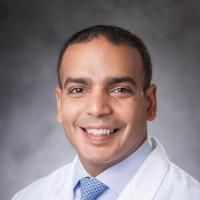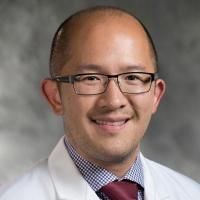Surgical technique of combined minimally invasive anterior column realignment at L1-L2 with open extension of prior fusion.
Date
2023-09
Journal Title
Journal ISSN
Volume Title
Repository Usage Stats
views
downloads
Citation Stats
Abstract
Surgical correction of fixed kyphotic deformity or severe sagittal imbalance traditionally involves three column osteotomies, which are associated with high morbidity rates. Anterior column realignment (ACR) has emerged as a minimally invasive alternative for restoring segmental lordosis. This technique involves a lateral approach and release of the anterior longitudinal ligament (ALL), followed by placement of a hyperlordotic interbody cage. In this study, we present a successful case of minimally invasive ACR for the treatment of flatback deformity and adjacent segment disease in a patient with prior L2-S1 fusion. Imaging revealed a flatback deformity, sagittal vertical axis elevation, and spinopelvic disharmony. The patient underwent a multistage procedure involving a lateral retropleural approach for ACR and interbody fusion, followed by open posterior instrumented fusion and vertebroplasties. Postoperatively, the patient experienced significant pain relief and improvement in lumbar lordosis, pelvic tilt, and pelvic incidence-lumbar lordosis mismatch. ACR combined with posterior release allows for manipulation of all three spinal columns, leading to spine reconstruction and improved spinopelvic harmony. We discuss the advantages of ACR, including its minimally invasive nature and potential benefits for patients with sagittal deformities. The presented surgical technique demonstrates the feasibility and efficacy of minimally invasive ACR in addressing flatback deformity and adjacent segment disease.
Type
Department
Description
Provenance
Subjects
Citation
Permalink
Published Version (Please cite this version)
Publication Info
Bergin, Stephen M, Christopher F Dibble, Ho Jin Lee, Muhammad M Abd-El-Barr, Christopher I Shaffrey and Khoi D Than (2023). Surgical technique of combined minimally invasive anterior column realignment at L1-L2 with open extension of prior fusion. Journal of spine surgery (Hong Kong), 9(3). pp. 288–293. 10.21037/jss-23-45 Retrieved from https://hdl.handle.net/10161/29289.
This is constructed from limited available data and may be imprecise. To cite this article, please review & use the official citation provided by the journal.
Collections
Scholars@Duke

Muhammad Abd-El-Barr
As a Neurosurgeon with fellowship training in Spine Surgery, I have dedicated my professional life to treating patients with spine disorders. These include spinal stenosis, spondylolisthesis, scoliosis, herniated discs and spine tumors. I incorporate minimally-invasive spine (MIS) techniques whenever appropriate to minimize pain and length of stay, yet not compromise on achieving the goals of surgery, which is ultimately to get you back to the quality of life you once enjoyed. I was drawn to medicine and neurosurgery for the unique ability to incorporate the latest in technology and neuroscience to making patients better. I will treat you and your loved ones with the same kind of care I would want my loved ones to be treated with. In addition to my clinical practice, I will be working with Duke Bioengineers and Neurobiologists on important basic and translational questions surrounding spinal cord injuries (SCI), which we hope to bring to clinical relevance.

Christopher Ignatius Shaffrey
I have more than 25 years of experience treating patients of all ages with spinal disorders. I have had an interest in the management of spinal disorders since starting my medical education. I performed residencies in both orthopaedic surgery and neurosurgery to gain a comprehensive understanding of the entire range of spinal disorders. My goal has been to find innovative ways to manage the range of spinal conditions, straightforward to complex. I have a focus on managing patients with complex spinal disorders. My patient evaluation and management philosophy is to provide engaged, compassionate care that focuses on providing the simplest and least aggressive treatment option for a particular condition. In many cases, non-operative treatment options exist to improve a patient’s symptoms. I have been actively engaged in clinical research to find the best ways to manage spinal disorders in order to achieve better results with fewer complications.

Khoi Duc Than
I chose to pursue neurosurgery as a career because of my fascination with the human nervous system. In medical school, I developed a keen interest in the diseases that afflict the brain and spine and gravitated towards the only field where I could help treat these diseases with my own hands. I focus on disorders of the spine where my first goal is to help patients avoid surgery if at all possible. If surgery is needed, I treat patients using the most advanced minimally invasive techniques available in order to minimize pain, blood loss, and hospital stay, while maximizing recovery, neurologic function, and quality of life. In my free time, I enjoy spending time with my family and friends. I am an avid sports fan and love to eat. I try to stay physically fit by going to the gym and playing ice hockey.
Unless otherwise indicated, scholarly articles published by Duke faculty members are made available here with a CC-BY-NC (Creative Commons Attribution Non-Commercial) license, as enabled by the Duke Open Access Policy. If you wish to use the materials in ways not already permitted under CC-BY-NC, please consult the copyright owner. Other materials are made available here through the author’s grant of a non-exclusive license to make their work openly accessible.
